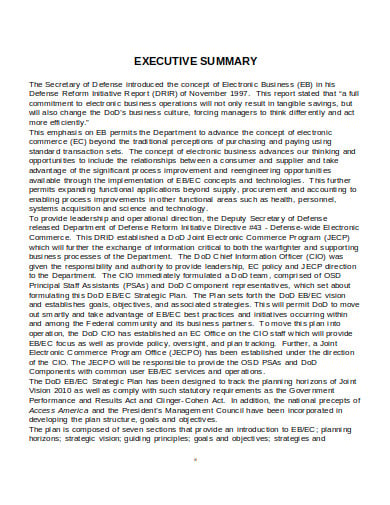Table of Contents
- FREE 10+ Research Executive Summary Templates in PDF | MS Word
- 1. Research Executive Summary Template
- 2. Research Executive Summary Format
- 3. Research Executive Summary Legal Services Template
- 4. Business Research Executive Summary Sample
- 5. Tourism Research Executive Summary Template
- 6. Student Research Executive Assessment Summary in DOC
- 7. Research Ethics Date Executive Summary Template
- 8. Research Project Executive Summary Example
- 9. Bio Medical Research Executive Summary Template
- 10. Simple Research Executive Summary
- 11. Simple Research Executive Summary Template
- Elements of an Executive Summary
- Importance of an Executive Summary
FREE 10+ Research Executive Summary Templates in PDF | MS Word
An executive summary refers to a short file or segment of a business-related report. It sums up a lengthier report or proposition or a group of linked reports in such a way that readers can get to know a large body of material quickly without having to read all of it. It generally contains a brief statement of the issue or solution addressed in the main document(s), background information, succinct overview and key findings. It is intended by managers as an aid to decision making and has been defined as the most essential part of a business plan.

FREE 10+ Research Executive Summary Templates in PDF | MS Word
1. Research Executive Summary Template
 sheffield.ac.uk
sheffield.ac.uk2. Research Executive Summary Format
 ecampus.phoenix.edu
ecampus.phoenix.edu3. Research Executive Summary Legal Services Template
 legalombudsman.org.uk
legalombudsman.org.uk4. Business Research Executive Summary Sample
 archive.defense.gov
archive.defense.gov5. Tourism Research Executive Summary Template
 visitcurrituck.com
visitcurrituck.com6. Student Research Executive Assessment Summary in DOC
 concordia.csp.edu
concordia.csp.edu7. Research Ethics Date Executive Summary Template
 nuffieldbioethics.org
nuffieldbioethics.org8. Research Project Executive Summary Example
 monash.edu
monash.edu9. Bio Medical Research Executive Summary Template
 grants.nih.gov
grants.nih.gov10. Simple Research Executive Summary
 ideawf.com
ideawf.com11. Simple Research Executive Summary Template
 urban.org
urban.orgElements of an Executive Summary
The Problem and Your Solution
These are your straps, and the first paragraph would better cover them. State your value proposition, and what you offer and specifically to whom. Bypass the acronyms behind your solution, the company history and the disruptive technology.
Market Size and Growth Opportunity
Investors generally look for a big and developing market. Devote a few sentences to presenting the basic clustering, scale, development, and dynamics of the industry – how many people or companies, how many dollars, how fast the growth is, and what drives the sector.
Your Competitive Advantage
Recognize your strategic sustainability benefits, such as unique benefits, cost savings or business linkages. Don’t ruin your reputation by claiming there’s no competition there. At the very least, you are dealing with the way things are currently being done. The investor has most likely already seen other proposals for similar solutions.
Business Model
Determine who your client is, what the price of the product or the service is, and how much will it cost you to construct one. Determine if you have got real clients now or are just beginning development. Specify your marketing and sales strategy (direct advertising, sales channel, social media marketing, and lead generation).
Executive Team
Keep in mind that investors are much more than just ideas that people fund. Determine why your team is singularly eligible to win and what they did earlier. Explain why each team member’s background fits, by listing their duties and roles at relevant firms. Involve consultants from outside, if they have professional experience.
Financial Projections and Funding
It takes three to five years to show your summary revenue and expense projections. Stakeholders need to know how much you are asking for funding now, and what they are getting. In general, the request should be the minimum amount of cash you need to reach the next important milestone in your plan.
Importance of an Executive Summary
1. Refine and Tighten Your Concept
You have to think of your summary as a written “pitch”. Your summary will outline your project’s highlights, contains only the most important issues, and leaves out less important issues and variables.
2. Determine Your Priorities
Keep in mind that the summary takes the reader through your project. Who ranks high in importance? Developing the Product? Investigation? The best place to acquire? Establishing Strategic Partnerships?
3. Make the Rest of the Process Easy
Upon completion of your summary, you can use it as an outline for the rest of your project. Just flesh out the high points in greater detail. Then work toward achieving your secondary goal by concentrating on your readers. Although you may be designing a project for your reasons only, at some stage you may wish to pursue financing or to bring in other investors, so make sure that your summary always meets their needs. You have to work hard to get the rest of the strategy into the point.

